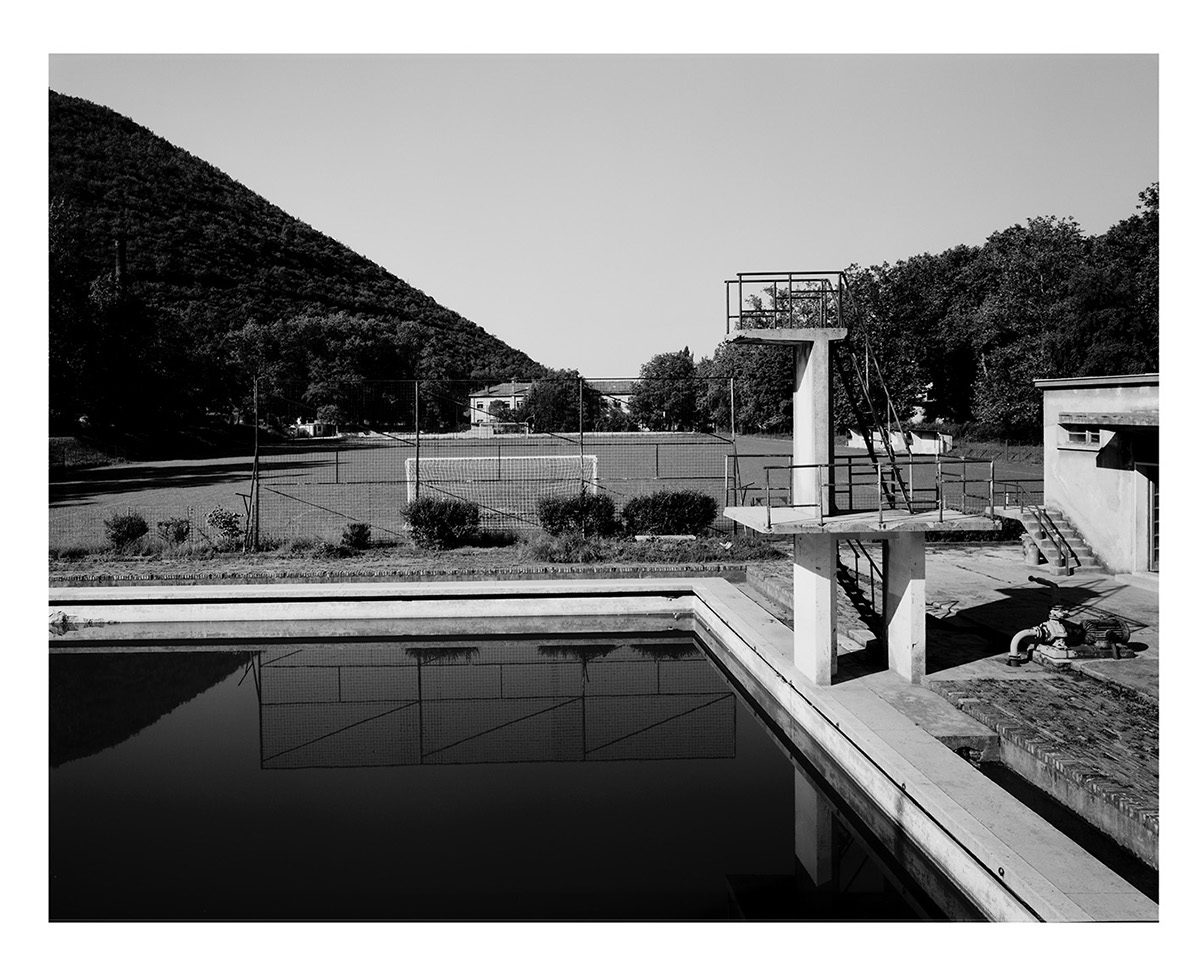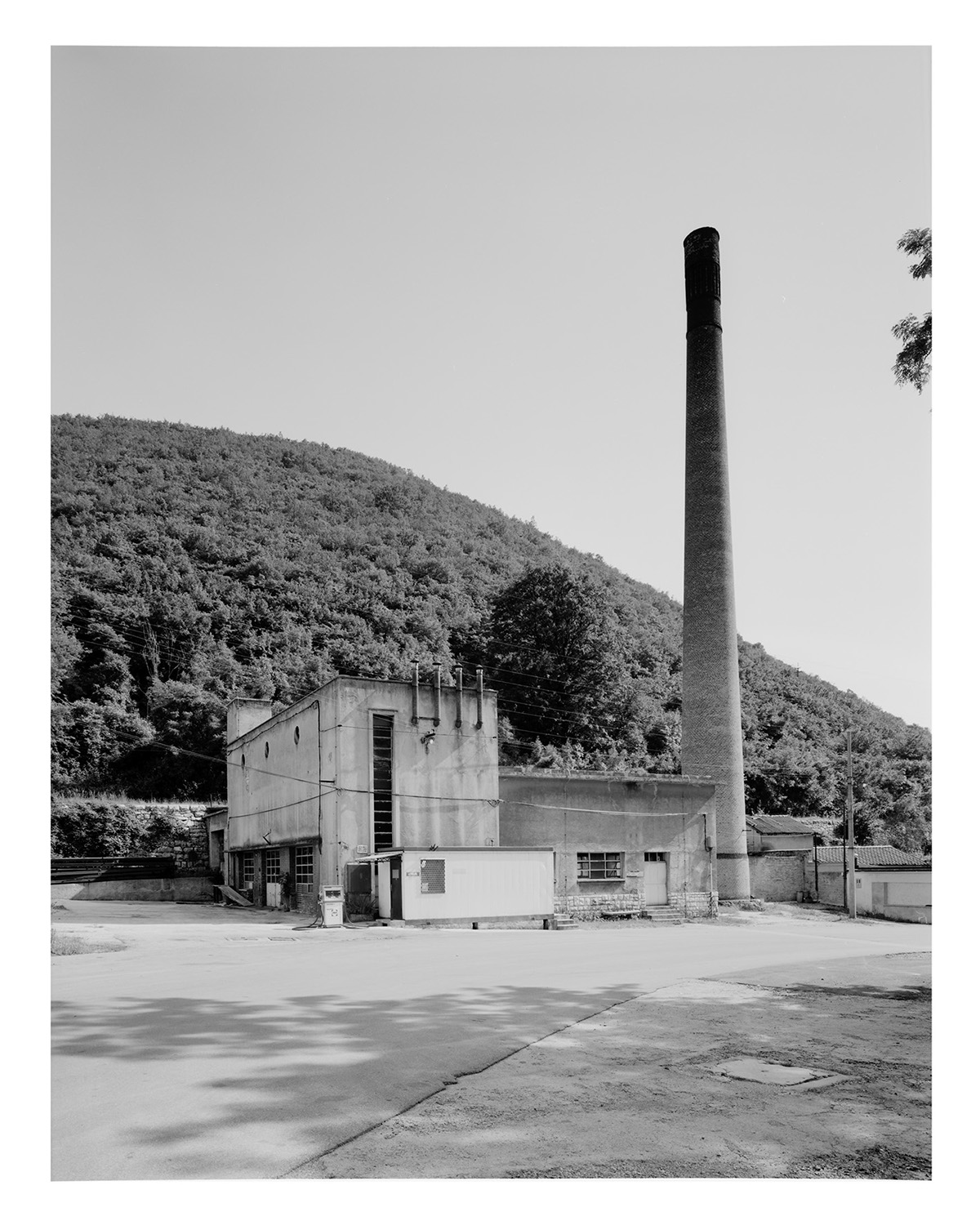Situated in the valley of the Krapanski Brook (a tributary of the river Raša), the first pit of the Raša coal basin was opened near the former village of Krapan in 1785. Originally a swamp, the valley around the Raša was gradually drained and improved to gain arable land for farming and building a town near the expanding coal mine operations.
Raša was built as a "new town" during 1936-1937 as part of Mussolini's urban colonization of Istria and other Italian territories. Planned and designed along rationalist principles by architect, Gustavo Pulitzer-Finali from Trieste, Italy, the mining town is organized along a linear axis connecting Upper and Lower Raša. Lower Raša comprises houses for ordinary miners set along two parallel streets while Upper Rasa is organized along 3 parallel streets with similar houses but slightly larger in size designated for senior miners and supervisors. Smaller residential enclaves were organized throughout the elongated plan, one of which is "vilete", a gated series of small urban villas designated for mining executives. The town centre connecting Lower and Upper Raša included a large square with hotels, post office, supermarket, movie theatre, pharmacy, administrative offices and small arcaded shops. Overlooking the square is the church of Santa Barbara (patron saint of miners). The church is in the shape of an overturned coal wagon while its bell tower alludes to a miner's lamp. Centrally located are also the town hospital, football field, bocci terrain and swimming pool with diving tower and bowling alley. Decades after the mine's closure, Today, Raša's appearance is part of a memory album of town planning, whereas the sound of coal wagons belongs to bygone days.
Arsia fu costruita in un anno e mezzo dal regime fascista italiano, in base al progetto dello studio STUARD dell’architetto triestino Gustavo Pulitzer Finali con la collaborazione degli architetti sloveni Albino (Zorko) Lahi e Francesco (Franjo) Kosovel), e la DDLL dell’ing Enrico Ceppi, ed inaugurata il 4 novembre 1937. Si trattava della prima città a carattere minerario progettata e costruita dal regime e ad essa seguì Carbonia. Sorse in una zona appena bonificata, con la regolamentazione del torrente Carpano ed il prosciugamento del lago omonimo, per favorire l'insediamento delle famiglie dei minatori impiegati nello sfruttamento delle vicine miniere di carbone.
L'abitato, d'impronta razionalista, fu dotato dei principali servizi: scuole, un ospedale, un campo sportivo, un ufficio postale, un cinema ed un albergo. La chiesa, dedicata a Santa Barbara, patrona dei minatori, è opera, come il municipio, dello stesso Pulitzer Finali. Si presenta con la forma di un carrello da minatore rovesciato mentre il campanile ricorda le lampade impiegate in miniera.




























